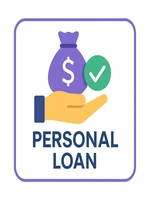Introduction to Early Loan Repayment
Early loan repayment in 2025 can save significant interest and reduce debt burden. Loanpao explores strategies to pay off home, personal, or business loans faster. Apply now to explore refinancing options.
Top Early Loan Repayment Strategies
Strategy 1: Full Prepayment
Pay off the entire loan balance in one go to eliminate interest costs, ideal for high-interest loans like personal loans (10–15% p.a.).
Strategy 2: Partial Prepayment
Make lump-sum payments to reduce principal, lowering interest and tenure, suitable for home loans (8–10% p.a.).
Strategy 3: Increase EMI Payments
Opt for higher EMIs to shorten loan tenure, effective for loans with flexible repayment options.
Strategy 4: Refinancing
Switch to a lower-interest loan (e.g., 7% p.a. vs. 9% p.a.) to reduce EMIs or tenure, ideal for home or business loans.
Strategy 5: Use Windfall Gains
Apply bonuses or tax refunds to prepay loans, reducing interest without impacting regular finances.
Comparison of Prepayment Options
Key prepayment options for loans in 2025:
| Strategy | Interest Savings | Prepayment Charges | Best For | Impact on Tenure |
|---|---|---|---|---|
| Full Prepayment | High (100% interest saved) | 0–2% of principal | High-interest loans | Eliminates tenure |
| Partial Prepayment | Moderate (30–50%) | 0–1% of prepayment | Home loans | Reduces tenure |
| Increase EMI | Moderate (20–40%) | None | Flexible loans | Reduces tenure |
| Refinancing | Moderate (10–30%) | 1–2% of old loan | High-rate loans | Varies |
| Windfall Gains | Low to Moderate | 0–1% of prepayment | All loan types | Reduces tenure |
Note: Check lender policies for prepayment charges before proceeding.
Pros and Cons of Early Loan Repayment
Weigh the benefits and drawbacks:
- Pros:
- Significant interest savings (up to 50% on long-tenure loans).
- Reduced loan tenure, leading to financial freedom.
- Improved credit score with timely prepayments.
- Lower debt-to-income ratio, enhancing loan eligibility.
- Cons:
- Prepayment penalties (0–2% for home loans, up to 5% for personal loans).
- Reduced liquidity due to lump-sum payments.
- Opportunity cost of funds (e.g., missing higher-return investments).
Tips for Effective Early Repayment
Maximize your repayment strategy:
- Check Prepayment Charges: Confirm fees (0–5%) with your lender before prepaying.
- Prioritize High-Interest Loans: Prepay personal loans (10–15% p.a.) before home loans (8–10% p.a.).
- Use EMI Calculators: Calculate savings using Loanpao’s EMI calculator to plan prepayments.
- Maintain an Emergency Fund: Keep 6–12 months of expenses before prepaying.
- Consult Lenders Early: Discuss refinancing or prepayment options to avoid surprises.

